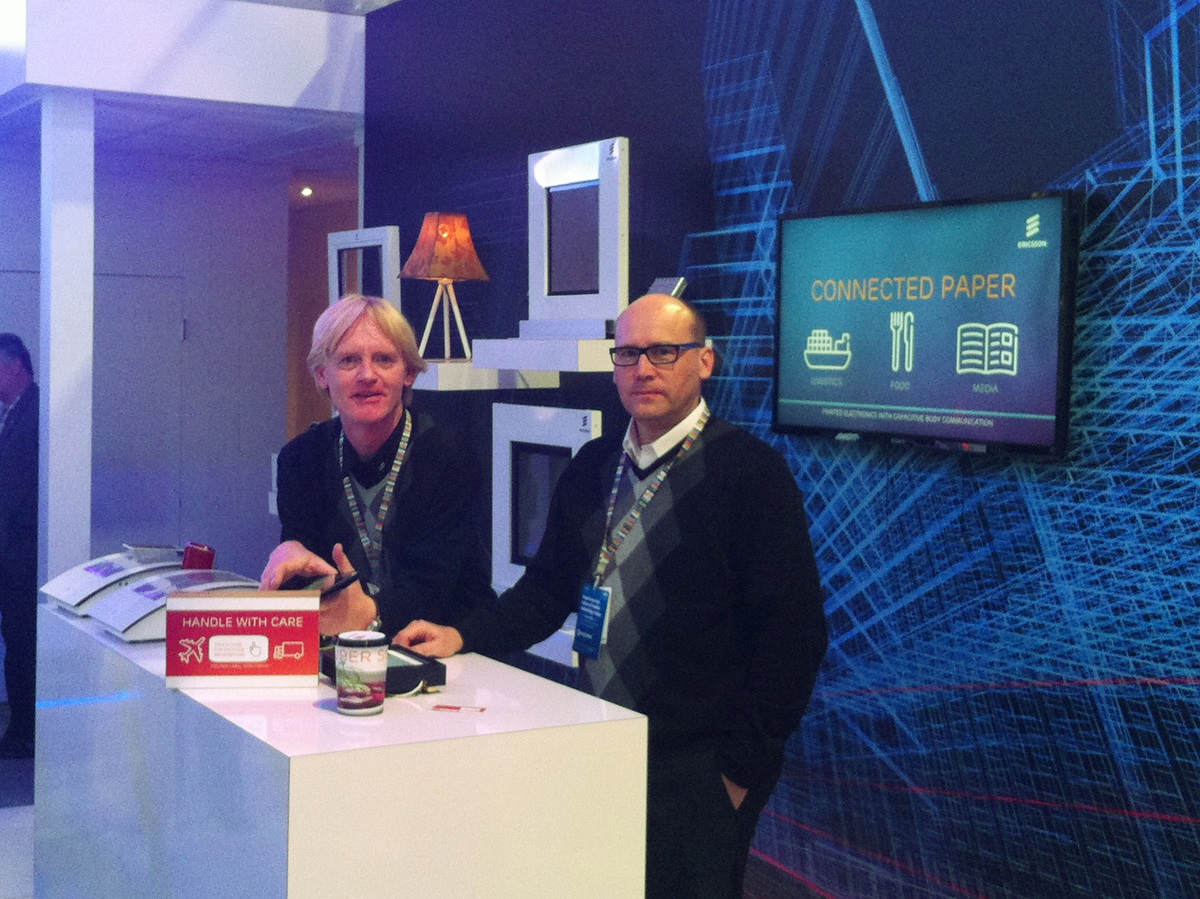 One year ago, Ericsson CEO Hans Vestberg awakened great interest at the major consumer electronics fair CES in Las Vegas when he sent a picture from a computer to his mobile telephone via his own body.
One year ago, Ericsson CEO Hans Vestberg awakened great interest at the major consumer electronics fair CES in Las Vegas when he sent a picture from a computer to his mobile telephone via his own body.This year the technology has been taken a step further; this time it is Ericsson strategist Jan Hederén who, together with Peter Dyreklev at Acreo Swedish ICT, will be leaving visitors to Las Vegas speechless when information is transferred to apps on a mobile telephone.
Extremely sensitive receiver
You touch a poster for a concert and get all the information about the time, place, date and buying tickets direct to the apps on the telephone in your pocket. You touch a label on an item of food in the shop and you find out how the packaging should be transported and at what temperature. You touch a map and you get directions and other information direct to your mobile. And much more. All you really need is a small, extremely sensitive receiver, developed by Jacob Wikner, researcher at the Division of Electronics Systems at LiU.Printed label and app in the mobile The research around transferring information from a printed label to services in your mobile is being carried out in a Vinnova-financed project in challenge-driven innovation, with Acreo as coordinator.
“One year ago we aimed for high speed transfer of video from hand to hand, for example, but since then we have miniaturised and now we are working with transferring small amounts of data, a short message or an identity,” Mr Wikner explains.
A small packet of 128 bytes is enough to create an enormous number of unique identities.
“When the identity has been confirmed, anything desired can be sent,” he says.
Identity inside
So in the electronics of the printed label there is an identity and a small printed battery that makes it possible to transmit a packet of data when you put your finger on it. An electric current is not being sent through the body; rather, the electric field in the body redistributes the charge. The hyper-sensitive receiver that reads the signal and sends the identity on to a suitable app on your telephone is in the mobile telephone in your pocket or your hand. “The technology exists and it works, but we must also convince mobile phone manufacturers to integrate the receiver in the phone. But we can naturally also imagine having a small dongle which attaches to the USB port on the telephone,” Mr Wikner says.
“The technology exists and it works, but we must also convince mobile phone manufacturers to integrate the receiver in the phone. But we can naturally also imagine having a small dongle which attaches to the USB port on the telephone,” Mr Wikner says.For Acreo, who are developing the printed labels, there remains the task of reducing the cost per label in order to open up the mass market. But as far as the receiver is concerned, the main hurdles have been overcome.
“It can be built by means of traditional micro-electronics even if we now want to continue to miniaturise, like in a mobile telephone or a wristwatch. We are also continuing internal development with a slightly different focus,” Mr Wikner says.
And maybe the human cable will leave the visitors to CES speechless this time too.
2014-01-08